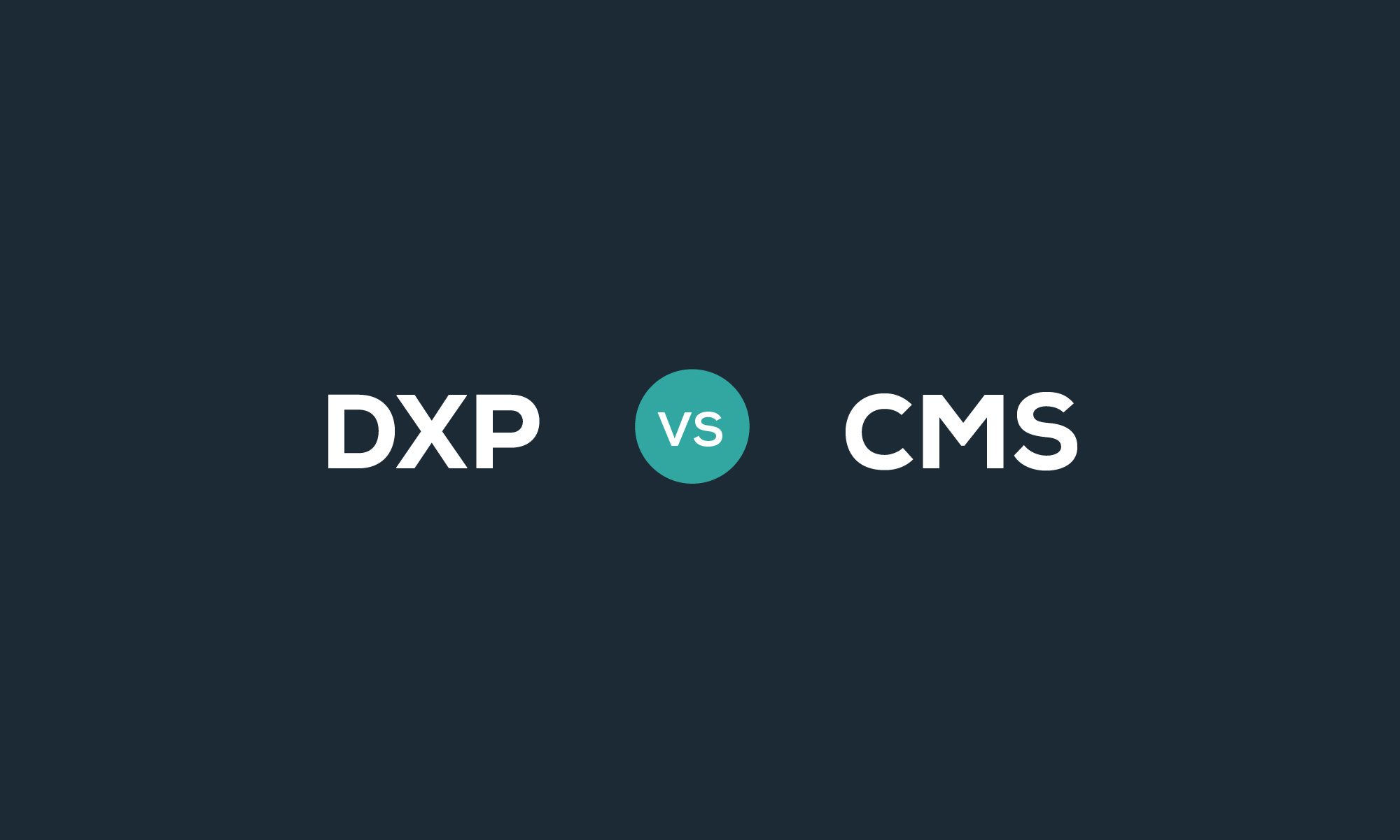What Does ‘Composable’ Mean?
Quick Take
Composable, in the digital sense, is the art of piecing together software components as easily as one would in a game of digital Lego.
Why the Buzz Now?
The concept of composable isn't exactly a groundbreaking revelation; it's an old wine in a new bottle. This sudden surge in its popularity is like rediscovering a classic song that's suddenly gone viral. Composable, at its core, is about integrating distinct software components into your tech stack and customizing how they work together - a practice that's been around since the early days of computing. However, what's changed is the context and the scale.
It has always been essential to use best-of-breed software components to get the most out of your digital ecosystem. In a way, composable is a testament to how classic concepts can be rejuvenated, given the right timing and context.
Examples of Composability: It's Been Around
Changing Search Functions
Out of the box, Drupal's standard search can be a bit lackluster. But you've always had the option to switch gears. Integrating add-ons like Solr or SearchStax can transform your search feature, making it not only more powerful but also more intuitive.
Adding Review Sections
Adding customer reviews to your site? You could use a Drupal module or opt for a service like Trustpilot. It's like picking between a hand mixer and a stand mixer in your kitchen - depending on the recipe you're whipping up, both can do the job, each in their own effective way.
Email Services
Sending emails through your website is straightforward, but for more sophisticated emails – ones that have higher trust levels and a lower risk of ending up in spam – integrating a service like SendGrid is a smart move. It's like upgrading from a basic phone to a smartphone, enhancing your features and ensuring your messages reach their destination more effectively.
Lead Capture Tools
For collecting customer info, having the right tools for your website forms is crucial, especially if you want to gauge how effective your website is and track important data. To achieve this, you can select from various tools and seamlessly integrate them with CRM or marketing automation systems like Salesforce or HubSpot. This approach not only streamlines data collection but also provides valuable insights into your website's performance.
In essence, these examples reveal that 'composable' — the concept of mixing and matching various components to meet specific needs — has been part of the tech playbook for ages. As a marketing leader, you might not have realized it, but you've likely been a composable hero all along. You've probably been adding and integrating these types of tools into your website for years. This proves that what we now call 'composable' isn't a new phenomenon; it's a tried and true practice that's finally getting its moment in the spotlight, with a trendy new label to match our tech-savvy era.
What’s the Difference Between Traditional and Composable CMS?
Traditional CMS: The Jack Of All Trades
A traditional CMS is akin to a Swiss Army knife – it's packed with a variety of tools, all built into one package. This setup covers everything your website might need, from content management to layout design, much like a pre-furnished apartment that's move-in ready. While it's a generalist, adept at handling a broad range of tasks, it's not necessarily a specialist in any one area. It's good at everything, but it might not excel in those specific, unique requirements you have. Think of it as being a jack of all trades but a master of none – convenient, yet possibly not the perfect fit for more specialized needs.
Composable CMS: The Customizable Puzzle
On the other hand, a composable CMS is akin to a versatile set of Lego blocks. Instead of being restricted to the pieces from just one set, you have the freedom to mix and match Legos from various sets. This flexibility allows you to construct a system that's precisely tailored to your needs. You use only the parts you need and want, crafting a unique and functional structure. It's like furnishing your home piece by piece, handpicking each item for a specific purpose, and creating a space that's uniquely yours. This approach empowers you to build something truly amazing and customized, transcending the limitations of a single, predefined set.
The Realization: "Is My Website Already Composable?"
Here’s a twist - your website might already be more 'composable' than you think. If you’ve ever added a plugin, used a different tool for emails, or integrated a third-party service, you’ve been using the principles of a composable CMS. You’ve been selecting and assembling different pieces to create a website that works just right for you, even if you didn’t call it 'composable'. So, in a way, the concept of a composable CMS isn’t some new, revolutionary idea; it’s a formal recognition and expansion of a practice that many have been using all along.
Is Drupal Already Nailing Composability in CMS?
Let's talk about Drupal and this whole composable CMS hype. It's like everyone's suddenly excited about a magic trick that's been around for ages. Drupal's been doing the composable thing for years, way before it was cool.
Imagine Drupal as that reliable old tool in your shed that you've been using forever. It's great for handling content on your website, like a trusty wrench that never fails. But here's where it gets interesting: there's this notion of selecting the best upgrade for each job.
For instance, consider Drupal's prowess in content management. It might be perfect for that, but when it comes to the specific demands of e-commerce, you might need a different tool. This is where the composable approach really shines. You can use Drupal for its strengths in content, and then bring in a specialized, custom-built tool for the intricate e-commerce aspects. It's like having a diverse toolbox; while Drupal acts as a reliable screwdriver for content, you can pull out a hammer specifically designed for those e-commerce nails.
So, while everyone's making a big deal about composable CMS as if it's a brand-new invention, in reality, we've been playing this game all along. Drupal has been mastering this mix-and-match approach for a while, seamlessly handling its tasks in an ever-changing tech scene. Its edge? Drupal's open nature and easy integration capabilities. This open-source ethos has put Drupal ahead in the composability game, proving it's always been ahead of the curve in adapting to these digital trends.
Is ‘Composable’ Worth Adding to Your Tech Vocabulary?
So, is this whole 'composable' buzzword worth the hype? Absolutely, but not in the way you might think. Think of composable more as a philosophy, a way of thinking about your digital world.
Composable is all about flexibility and not being tied down to one monolithic solution. We’ve been talking about modular and incremental approaches in tech for ages. It’s about building a digital ecosystem that’s as flexible and adaptable as possible, like a set of tools that can handle a variety of jobs.
So, when you think about the future of your digital platforms, imagine making them as composable as you can. But remember, it's more about the mindset and the approach you take than a specific product you buy. You’re building this philosophy into your system, piece by adaptable piece, to create a digital environment that can evolve with your needs.
When is a Composable Solution Right for You?
Deciding if a composable solution fits your needs involves a bit of soul-searching. It's like choosing between building your own custom car and just picking one off the lot. Sure, the custom route lets you tailor every detail, but it also means more decisions, more questions, and a lot more figuring things out.
Here's the thing: composable systems offer incredible flexibility, but with great flexibility comes great responsibility. You're not just picking a solution; you're piecing it together.
Now, if you’re looking for a quick, ready-made solution, something like Wix or Squarespace might be more up your alley. They’re like the fast-food joints of the web world - quick, convenient, and no fuss. However, just like fast food, there's not much room for customizing your order to meet specific, unique needs. With these options, you generally get what you get, without the tailored flexibility that a composable approach offers. But if you're ready to roll up your sleeves and dive into the nitty-gritty of customizing your digital ecosystem, then a composable solution is your playground.
It’s also about knowing your team's limits. If you're a one-person army, managing a vast, complex ecosystem might be overkill. Sometimes, simplicity is king. So, think about your operational capacity and what you can realistically handle. Composable is great, but it's not a one-size-fits-all. It's all about finding that sweet spot where flexibility meets feasibility for you and your team.
So What’s The Verdict?
In a nutshell, 'composable' is just a trendy term for something we've been doing all along.
And for the record, yes, Drupal has been the unsung hero of composability, sort of like the grandparent who was hip before it was cool. It’s been there, done that, got the t-shirt.
But here's the key: before you jump on the composable bandwagon, remember that it's not just about the tools or the technology. It's about understanding your needs, and your team's capacity, and making well-informed choices. This is where a discovery phase becomes crucial. At Symetris a discovery phase includes - engaging in conversations, conducting interviews, and assessing capabilities – that’s where the magic happens in crafting your digital strategy! Since you’re already working within a composable framework, don't sweat it. Instead, focus on how to further build and enhance composability to best suit your unique digital needs and goals.


